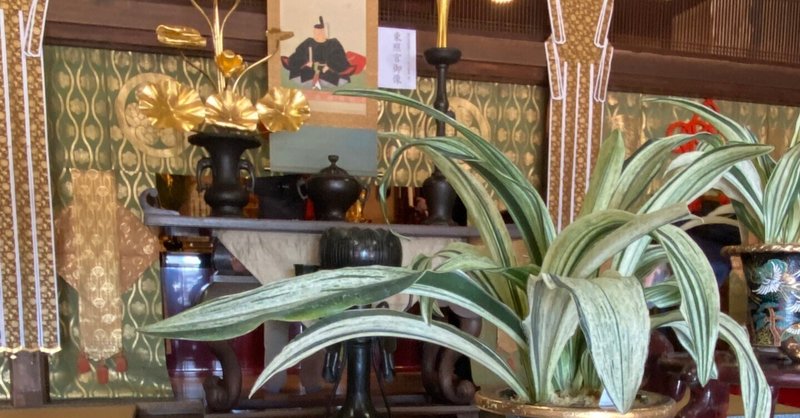
【~連載~静岡の歴史を学ぼう177】Omoto Part2 万年青(おもと)パート2
最近ではインスタグラム等SNSでおもとを見て、業者のところまで足を延ばす若い女性が増えているとのことです。彼女たちは風水対策としておもとを求めています。
10月15日 臨済寺の一般公開で、徳川家康公が好んだ縁起の良い植物であるおもとの展示がありましたのでご紹介致します。
Omoto Part2
万年青(おもと)パート2
I asked the staff on the venue how to grow Omoto.
おもとをどうやって育てるのか、会場のスタッフに尋ねました。
Omoto favors mild climate and direct sunshine.
おもとは温暖な気候と直射日光を好みます。

The suitable temperature is from 0 to 25 centigrade.
適した気温は0℃から25℃です。
In winter, it should be placed outside to be exposed to sunshine in the daytime.
冬は、日中外に出して日光に当てると良いです。
At night, it should be inside a room.
夜は部屋に入れます。

In summer, when the temperatures are usually higher, the Omoto should be kept indoors.
夏、気温が通常暑い時は、おもとは屋内に置くのが良いです。
How to treat them is similar to orchids.
扱い方は蘭に似ています。
Many Omoto enthusiasts have their greenhouses to grow their Omoto.
多くのおもと愛好者は栽培のために温室を持っています。
According to the staff, in the Edo period, there were specific servants who had to take care of Omoto.
スタッフの方によると、江戸時代、城内にはおもとの管理をする特定の家来がいたそうです。

The story indicates how carefully this plant was treated in castles in the Edo period.
そんな話を聞くと、江戸時代、城内でいかにおもとが大事に扱われていたかが分かります。
The pods where Omoto are grown are usually in clay pots called ‘Rakuyaki’, which is also often used as a bowl during tea ceremonies.
おもとが栽培されている鉢が「楽焼」と呼ばれる焼き物で、お茶席でのお茶碗としてしばしば使われます。

その鉢も豪華です。
In the exhibition, these plants are put in special gorgeous pots.
展示品では、特別の豪華な鉢に入れられています。
Visitors enjoy viewing how the plants’ leaves appear to be dynamic with its curled, extended, vivid green and yellow color with unique, distinctive patterns.
どれだけその葉がカールしていたり、伸びていたり、緑や黄色の葉に独特な目立つ模様が入っていたりして魅力的に映るか、そのようなことを見て楽しむことが出来ます。


In the Edo period, growing garden plants was one of the most popular hobbies.
江戸時代、園芸植物を育てることは最も人気のある趣味の一つでした。
Process of selective breeding was advanced to enjoy various kinds of flowers.
様々な種類の花を楽しめるように、品種改良の過程は発達しました。
The most outstanding plant during the Edo Period was Morning Glory, however, Omoto was also cultivated and improved especially among daimyo and wealthy merchants.
江戸時代、(品種改良で)最も目立った植物は朝顔でしたが、おもとも特に大名やお金持ちの商人の間で栽培、改良されました。
参考資料:パンフレット「日本の観葉植物 おもと」 日本おもと協会・日本おもと業者組合 発行

多くの万年青(おもと)を鑑賞していました。
この記事が気に入ったらサポートをしてみませんか?
